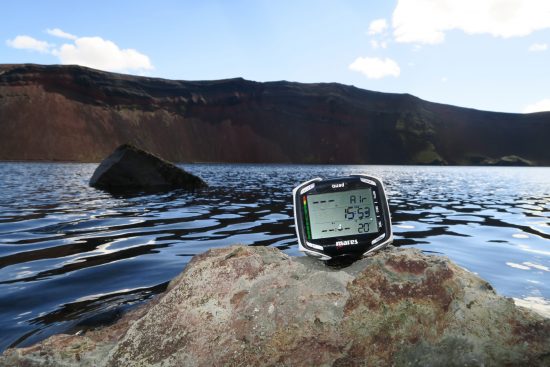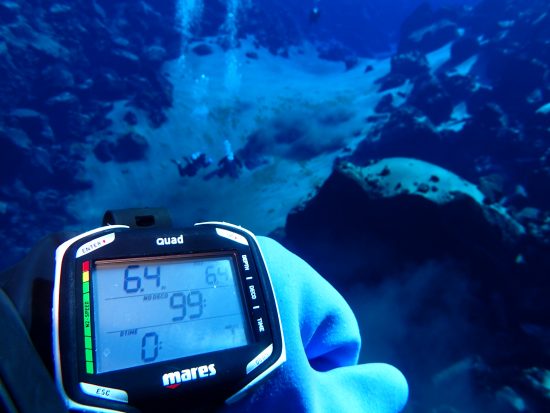



It's not every day that you get to dive a new site which is not only new for you, but new to diving, period, and to do so with the new MARES QUAD computer makes it just that much more exciting.
That is indeed what we did in August 2017 on the Iceland Highlands Dive Expedition. The multi-national team consisted of seven intrepid explorers, the expedition leader (yours truly) and veteran dive guide and Iceland expert Aron Bjarnason. It's only the second time the team at Iceland Dive Expeditions - or anyone, for that matter! - has organized and executed an extended dive expedition of this sort into the extreme beauty and demanding conditions of the Icelandic highlands.
As before, the focus was on exploration and diving places that few, or even none, had dived before. This time around we ended up diving three sites where fewer had been than have walked on the moon! One of those sites has only ever been dived by the Iceland Dive Expeditions team and our clients. It is, without a doubt, the best kept underwater secret in this corner of the Universe! More on that below. On top of that, we explored a relatively new volcanic lake (in a crater that was formed in the devastating Laki eruption in 1783) that had never been dived before. A three hour drive from the nearest paved road took us deep into the hinterlands through one of the world's largest
lava fields (630 km2). There lies a 25 km long series of craters, only one of which contains water. This lake needed to be explored.
As anyone who's ever tried it knows, to be the first ever people to dive and explore a site where you have no idea what to expect is a truly unique and thrilling experience. This is especially true in highland volcanic crater lakes where the ecology and aquatic environment may well be unique and unexpected. In this particular case, amongst interesting lava formations, we discovered an unbelievable abundance of a type of cold-water tadpole (or shield) shrimp, Lepidurus arcticus. Presumably this otherwise scrumptious food for the Arctic char is the top predator in this particular lake and reigns supreme, as no char was spotted. Further research is needed to confirm this, but meanwhile it seems a plausible assumption to make. Apart from that the lakeside scenery and setting for the dive was absolutely breathtaking! Multicoloured mossy lava stones and scoria hills surrounded this pristine pool, and apart from the divers' bubbles gently breaking the surface there was not a sound to be heard. It was one of those serene encounters with nature that come all too seldom in life.
Aside from this exciting adventure, the team agreed that the most beautiful and memorable dive was the one we undertook in another much older volcanic crater lake known as "Tear of Odin" since its discovery a few years back by yours truly, son and daughter. This crystal clear, sapphire blue lake is of such unrivalled beauty and mystical quality as to defy words. Not even the best photographic rendition can do justice to this gem of nature. You had to be there!
On all our dives it was a particular pleasure to examine the new MARES QUAD computer and try to push its limits. New on the market, no one had ever brought this technological wonder to these environments. No matter what you threw at it; sharp lava rocks (not literally, of course), near freezing temperatures in glacial melt-water, high altitude volcanic lakes, or visibility ranging from 5 - 100+ meters, it performed in outstanding fashion - as was to be expected! The large, informative, yet clutter-free display really came in handy on a dive where you could barely see the tip of your extended hand. The adjustable algorithms for altitude were essential for diving some of the volcanic craters. Lastly the large size and placement of the control buttons are a must for the solid dry gloves and liners necessary for near-freezing water temperatures. All told, the QUAD is a superior dive computer for the most extreme conditions and makes the most epic dives even more enjoyable!
 David
David 8th September 2017
8th September 2017 Iceland
Iceland